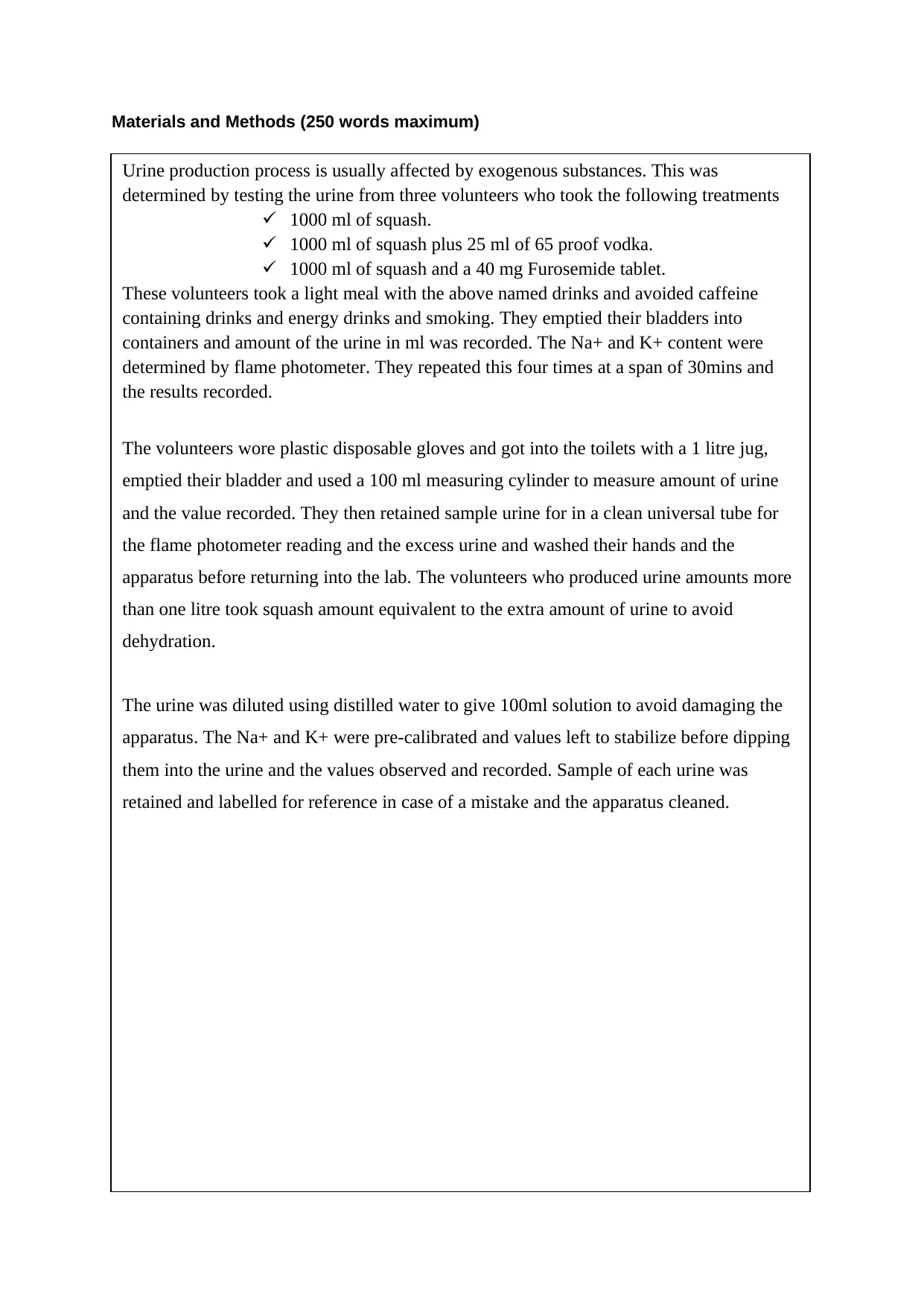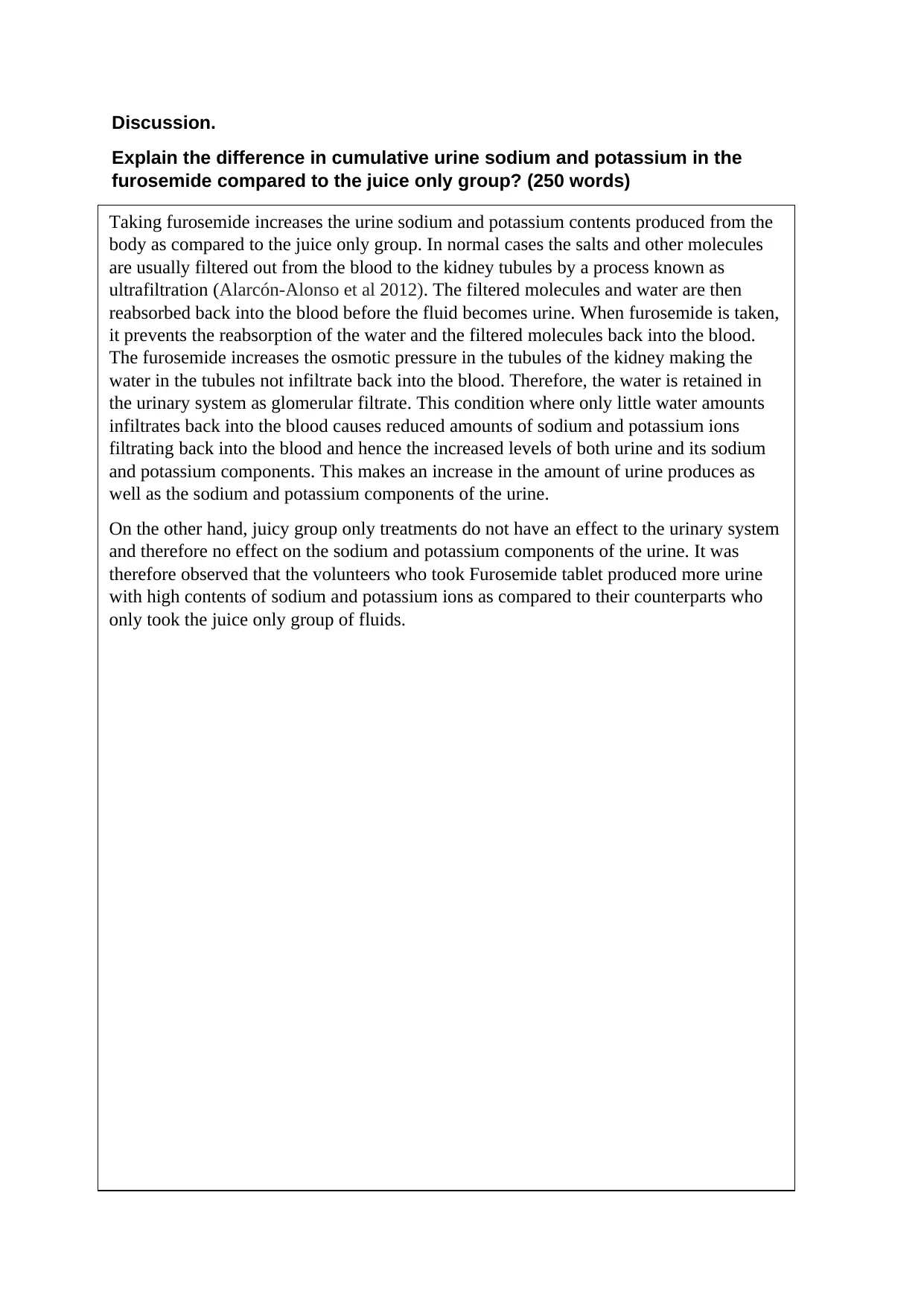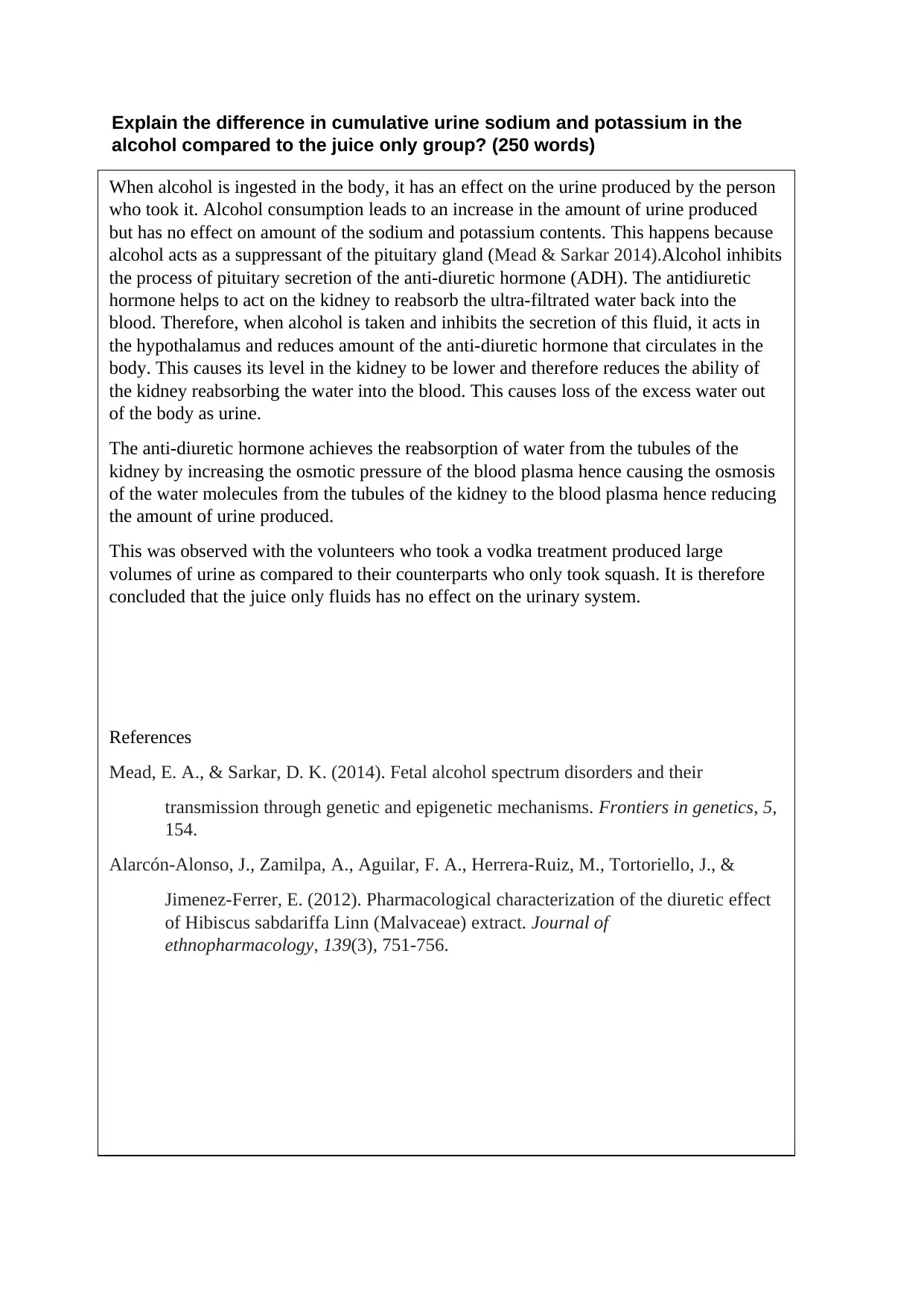University of Brighton: BY266 Renal Function Lab Report
VerifiedAdded on 2023/03/17
|4
|962
|85
Report
AI Summary
This report analyzes a renal function lab class write-up investigating the impact of exogenous substances on urine production. The study involved three volunteers who consumed squash alone, squash with vodka, and squash with furosemide. Urine volume, sodium, and potassium content were measured at 30-minute intervals. The report discusses the differences in cumulative urine sodium and potassium levels between the furosemide and juice-only groups, explaining how furosemide inhibits reabsorption in the kidney tubules, increasing sodium and potassium excretion. It also explains how alcohol consumption, through its effect on the anti-diuretic hormone, increases urine volume. The report provides a comprehensive overview of the methodology, results, and discussion, linking the findings to the underlying physiological mechanisms of renal function and osmoregulation. References are provided for further reading.
1 out of 4






![[object Object]](/_next/static/media/star-bottom.7253800d.svg)